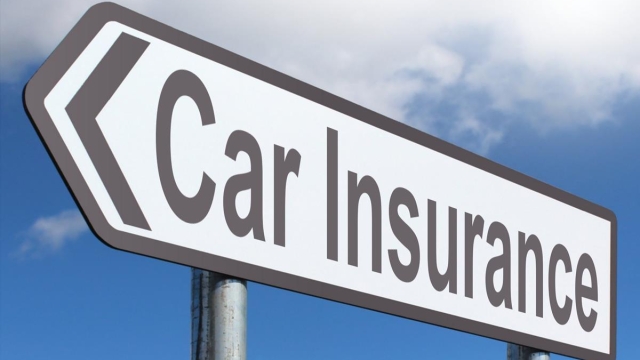Car insurance, a necessary safeguard for drivers, provides financial protection and peace of mind in the event of an accident. Yet, navigating the intricate web of policies, coverage options, and jargon can be overwhelming for many. That’s why we have created "The Ultimate Guide to Navigating Car Insurance: Unveiling the Roadmap to Smart Coverage." In this comprehensive guide, we will help demystify car insurance, explore its fundamentals, and equip you with the knowledge to make informed decisions regarding your coverage. Whether you’re a new driver or a seasoned road warrior looking to brush up on your understanding, this guide is here to simplify the complexities and help you travel the path to smart coverage. So, let’s buckle up and embark on this journey together!
Understanding Car Insurance
Car insurance is a vital aspect of owning and driving a vehicle. It provides financial protection in case of accidents, theft, or damage to your car. Understanding the basic principles of car insurance is essential for every driver.
Car insurance gives you peace of mind by transferring the risk of potential financial losses to an insurance company. In return for a premium payment, the insurance company agrees to cover the costs of repairs or replacements in the event of an accident or other covered incidents.
When considering car insurance, there are several key factors to keep in mind. First, the type of coverage you choose will determine the level of protection you have in case of an accident. The most common types of car insurance coverage include liability coverage, collision coverage, and comprehensive coverage.
Liability coverage is required in most states and covers the costs associated with injuries or damages that you cause to others in an accident. Collision coverage, on the other hand, pays for the repair or replacement of your vehicle if it is damaged in a collision, regardless of who is at fault. Comprehensive coverage provides protection against non-collision incidents such as theft, vandalism, or natural disasters.
It’s important to note that car insurance policies have limits and deductibles. The limit is the maximum amount the insurance company will pay for a covered claim, while the deductible is the amount you must pay out of pocket before the insurance coverage kicks in. Higher deductibles generally result in lower premiums, but it’s essential to choose a deductible that you can comfortably afford.
By understanding the basics of car insurance and the different coverage options available to you, you can make informed decisions that will provide you with the right level of protection for your needs and budget. Stay tuned for the next sections of this guide, where we will explore more about the intricacies of car insurance and help you navigate the process with confidence.
Types of Car Insurance Coverage
When it comes to car insurance, there are several types of coverage options available to ensure you have the right protection for your vehicle. Each type of coverage serves a specific purpose and understanding them can help you make informed decisions. Let’s explore the various types of car insurance coverage:
-
Liability Coverage:
Onesure
Liability coverage is the most basic and essential type of car insurance. It helps provide financial protection if you are at fault in an accident and cause damage to someone else’s property or injure another person. Liability coverage typically includes two components – bodily injury liability and property damage liability. It’s important to note that liability coverage only covers the damages you are responsible for, not your own vehicle. 
Collision Coverage:
Collision coverage helps pay for the repair or replacement of your vehicle if it is damaged in a collision, regardless of fault. Whether you collide with another vehicle or an object, such as a tree or a pole, this coverage can be crucial to get your car back on the road. Collision coverage typically comes with a deductible, which is the amount you would need to pay out of pocket before the insurance kicks in.-
Comprehensive Coverage:
Comprehensive coverage offers protection for your vehicle against non-collision related damages. It covers expenses for damage caused by theft, vandalism, natural disasters, or accidents involving animals. Comprehensive coverage is also subject to a deductible, which you would need to pay before the insurance company covers the remaining costs.
Understanding the different types of car insurance coverage is essential to ensure you have the right level of protection for your needs. By evaluating your driving habits, budget, and the value of your vehicle, you can make informed decisions when selecting the appropriate coverage options. Remember, it’s crucial to review and compare policies from different insurance providers to find the best fit for you.
Choosing the Right Car Insurance Policy
When it comes to choosing the right car insurance policy, there are a few key factors to consider. First and foremost, you should assess your specific needs and budget. Determine the level of coverage you require, whether it’s basic liability or more comprehensive coverage that includes things like collision and comprehensive protection. Understanding your needs will help you find a policy that aligns with your requirements.
Next, it’s important to research and compare different insurance providers. Take the time to gather quotes from various companies and review their offerings. Look for insurers that have a good reputation for customer service and responsiveness. Additionally, consider factors such as their claims process and any additional benefits or discounts they may offer.
Once you have gathered all the necessary information, take the time to carefully review and understand the terms and conditions of each car insurance policy you are considering. Pay close attention to important details such as deductibles, coverage limits, and any exclusions or limitations. It’s crucial to have a clear understanding of what your policy provides and what it does not cover.
By following these steps and taking the time to research and compare, you can make an informed decision when choosing the right car insurance policy. Remember, finding the right coverage is not only about getting the best deal financially, but also about ensuring that you have the appropriate level of protection for your specific needs.


